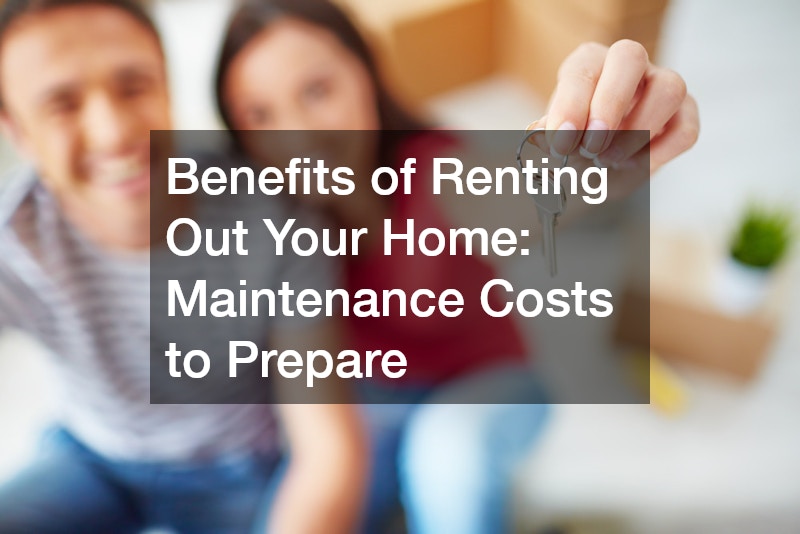
It’s winter again, and your heating costs are going through the roof. Of course, there is no escape from increased heating costs during the winter months, but if you find that your heating costs are growing at an alarming rate, it is worth investigating whether there are any fixable problems around the house that are exacerbating the problem.

Your Home Isn’t Energy-Efficient
What does it mean to have an energy-efficient home? Basically, the home is designed and built in such a way as to reduce unnecessary energy consumption by relying on harnessing natural energy resources like trapping the heat generated by the sun in winter or cooling the premises by a breeze in summer. Energy-efficient homes provide healthier living conditions for the homeowners, offer considerable money savings over conventional homes, and are much kinder to the environment. That is why they are sometimes called eco-friendly homes or green homes.
Homeowners and builders alike realize that building an energy efficient home helps protect the environment as well as helps save on high heating costs, so they experiment and learn how to adapt conventional building models and work with materials that do not harm the natural environment while creating a dwelling that is kinder and less damaging to the natural environment. Recent consumer awareness and demand for energy efficient homes have increased the number of energy efficient home builder companies. It is no longer a difficult task to find them, and there is even a certification and a code in place that an energy efficient home builders have to uphold.
There is a misconception that building an energy efficient house is expensive. Although you can equip your home with all the latest, big-ticket items like photovoltaic panels, geothermal HVAC systems, solar thermal systems, green roofs, and so on, there are also many other much cheaper ways to ensure that your home is as energy efficient as it can be. In addition, a more efficient home will equate more value for the occupants and fetch a higher resale price one day.

Your Heat Is Escaping Through Your Roof
One of the best ways to save on your energy demand is to stop heat from escaping through your roof. Through convection currents, hot air rises and diffuses through your ceiling into the space between the ceiling and the roof, eventually dissipating through the roof to the air outside. According to the information on Greengage.co.uk, 25 percent of the heat in your home escapes through the roof.
The main reason air can escape through the roof is that the roof is not well insulated. But it is not easy to tell whether the insulation layer is intact or in tatters. One obvious signs that your roof is not well insulated, is that your roof is unusually clean, even after a snowfall. That is because if your roof is warm due to inadequate insulation, the snow melts, and frost does not form on the roof’s outside surface. If you see your neighbor’s roofs laden with ice and snow, and there is scarcely any on your house, that means that your roof is warm, and you have heat escaping through the roof. The best thing to do now is to call the roof contractor for that roofing estimate. Make sure that the roof repair company you call is a reputable one.
If your roof is not sufficiently insulated, cold air from outside will meet with warm air on the inside of the roof tiles causing condensation droplets to form and seep into the insulation materials resulting in water damage. The dripping water can also promote mold growth in your roof, which is bad news for all homeowners. Growing mold releases toxic spores that are detrimental to human health. If on top of the high heating costs, your family is getting sicker than usual with respiratory conditions, it is in your best interest to call the roofing company to come and assess the state of your roof.
Residential roofers are specialists in insulating roofs, both new and existing ones. They will be able to give you advice on what type of insulating material will work best in your circumstances, taking into account the materials used to construct the original roof. As there are several types of insulation materials available, and each one has a particular function, consulting a roofing business will help you figure out whether it is best to use a fiberglass insulating roll, foam board insulation, or the loose-fill insulation that can be sprayed to cover all the inaccessible nooks and crannies, and make your home warm and cozy again at a fraction of the price.

Your Landscaping Is Blocking the Sun
Having a lush garden with lots of trees and shrubs can be a blessing in summer, but in winter, your garden landscape design may prevent your house from benefiting from the natural warmth generated by the sun. Even in winter, the sun still has the power to warm the walls of a house.
When it shines through a glass window into a room, it warms the air within a room.
However, some houses have vegetation growing very close to them, or have tall trees growing in the line that obstructs the rays falling onto the house.
The tall trees block the rays of the sun from reaching the windows and walls. The result is that all the heat needed to warm up the room needs to be generated by the furnace, and there is no possibility of trapping the natural heat.
Your HVAC System Is Too Old
In general terms, the HVAC system should last between 15 and 25 years before it is considered too old and ready for replacement. Of course, the length of time that the unit works efficiently depends on what type of HVAC system it is, as some models age faster than others. Also, depending on how well the unit was maintained throughout its lifespan will impact its longevity.
Poor maintenance practices dramatically shorten the life span of the HVAC system by accelerating the wear and tear of the component parts. When the components don’t work as they should, the unit uses more power to generate the required temperatures. That extra power usage may be just what is causing the increase in your bill.
Make sure that you clean the unit’s air filters regularly. The clogged-up air filter in an HVAC system decreases the air quality in your home and can cause damage to the rest of the unit.
You may consider replacing your unit. HVAC systems are quite expensive to replace, but if you count the consistently high energy bills you need to pay, you realize that lower utility bills will offset part of the replacement cost. Especially considering that the newer models are far more energy efficient than the older models. You can expect a 20 percent saving each month if you replace an 80percent efficiency unit with a 95 percent efficiency unit.
If you decide to replace your current HVAC system, contact home heating services near you to get advice on what type of HVAC system will be best suited for your home.
While you have the home heating services repairman in your home, ask them to check your ductwork. A leaking duct may just be the cause of heat loss enough to raise your heating bill to an unprecedented height. Hopefully, with some repairing and sealing of the ductwork, your HVAC will perform like its usual efficient self.
To reduce their heating costs, some people opt to install a solar heating system into their homes. They rationalize that change on the premise that if they use solar energy to heat their home, their regular heating costs will be reduced. In addition, the solar power solution seems to be in line with the current energy and environmental issues where people around the globe are clamoring for everyone on the planet to switch to cleaner energy sources for their energy needs.
The only disadvantage of installing a solar heating system in your home is the price of the photovoltaic panels needed to collect the heat. They are expensive to buy and need to be installed by qualified people to ensure they work properly. Most of the available systems on the market do not work as stand-alone systems due to the lack of storage capacity for days when the clouds cover the sun. The solar heating systems work as a complementary addition to the normal, natural gas, or other power sources.

Adjust Your Daily Habits
The factors mentioned above are all good ways to reduce your soaring heating bills. However, the most important factor that can help save energy is how you use it. By tweaking and adjusting your everyday habits, it is possible to reduce heating costs and save money.
Every day, you can harness the natural power of the sun by opening the curtains and letting the sun rays warm up a room through a closed window. At night, close the curtains again, providing an additional insulating layer that keeps the warm air from dissipating through the cold window. By letting the sun do some warming work for you, the additional power needed to bring up the temperature to a comfortable level will be less, and therefore, you will be able to save money.
Ensure that all the windows and outside doors are closed when you are using the HVAC system, having an open exit will affect the heat distribution in the whole house, making the system work harder on trying to warm up the cold air coming into the house through an open window.
Make sure that the windows are properly insulated. Letting in cold air through cracks and open crannies around the window frame is detrimental to your efforts to warm up the space. By inspecting and sealing your windows, you make sure that the heat is retained inside your home, and you can save up to 40 percent on your energy bill.
Try setting the thermostat a couple of degrees lower than you normally do. If you find the temperature colder in the rooms, consider wearing a sweater inside as you go about your day. Wearing extra layers will keep you comfortably warm while saving you money by letting the HVAC system do less work.
Consider completely switching off or drastically reducing the thermostat setting while yoDontu are at work and nobody is at home. Letting the HVAC take a break each day for the eight hours you spend at work can reduce the wasted energy to heat spaces that you don’t use. With today’s Smart Thermostats that can be controlled through mobile devices, the drag of coming home to a cold house is long gone. Simply increase the thermostat setting remotely on your way home. By the time you open the door, the temperature will have increased to the normal, comfortable level. The same reasoning can be applied to cutting off the warm air entry to spare rooms, storage rooms, and any other part of the house you seldom use. Instead of wasting energy on heating the unused spaces, it can be distributed among your common living spaces where you spend the most time.
Lastly, you need to check that all the vents and radiators throughout your home are clear from blockages by furniture or other ornaments. Open vents will facilitate the heat circulation in your home and keep all the necessary rooms warm while reducing the HVAC workload and saving you power and money.
Don’t forget that other factors like rising gas prices and changes in weather temperatures can also contribute to you experiencing a sharp rise in your heating bill. So, as hard as you try to lower your monthly energy expenses, the amount you have to pay does not get any less.




